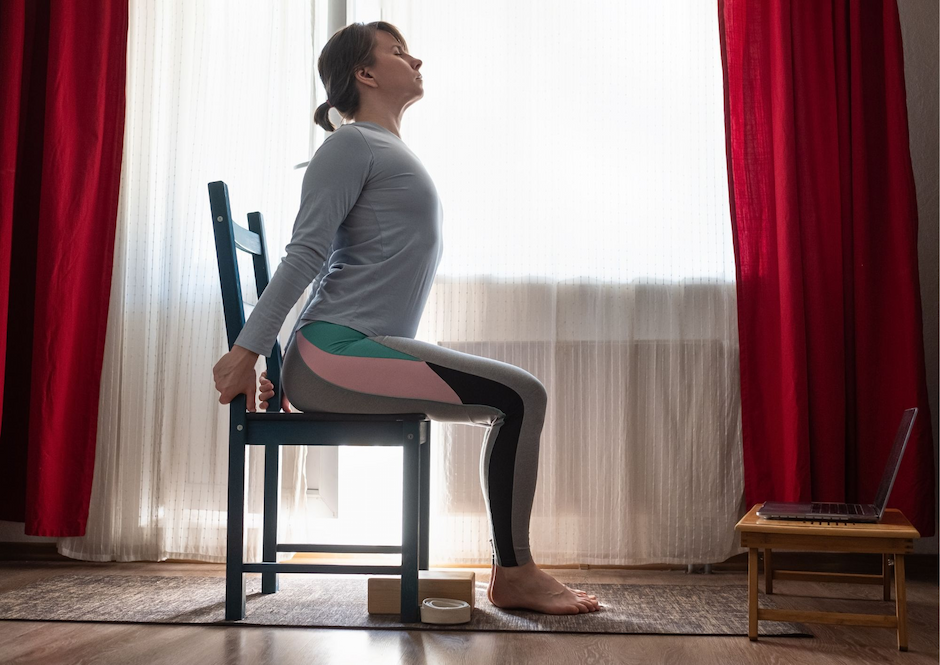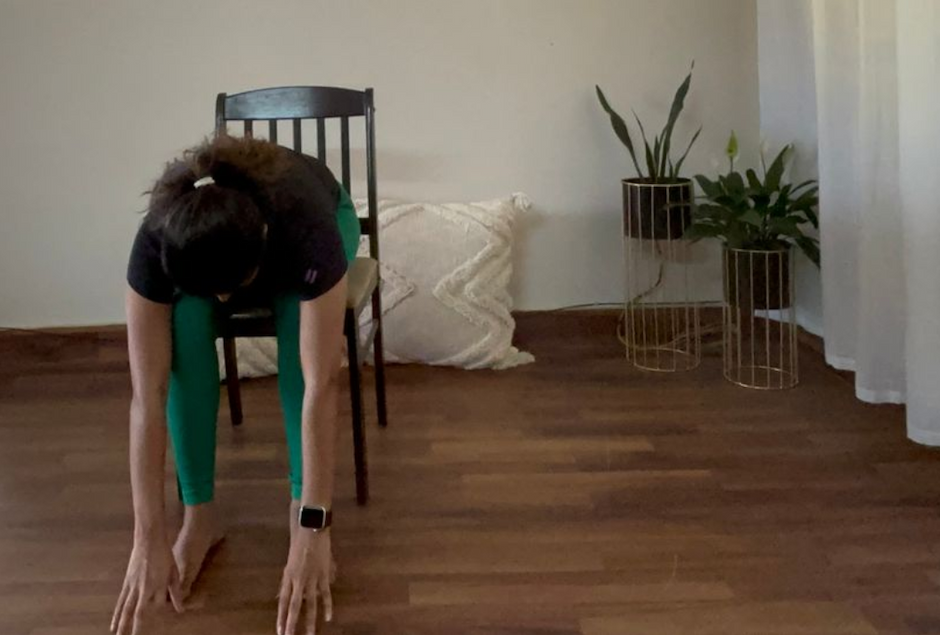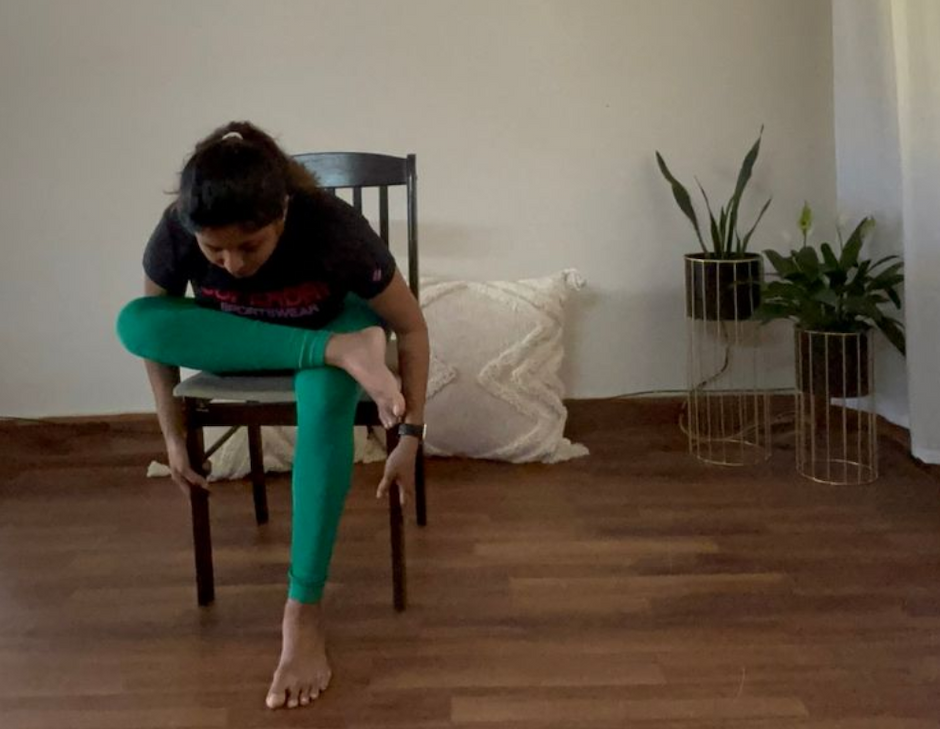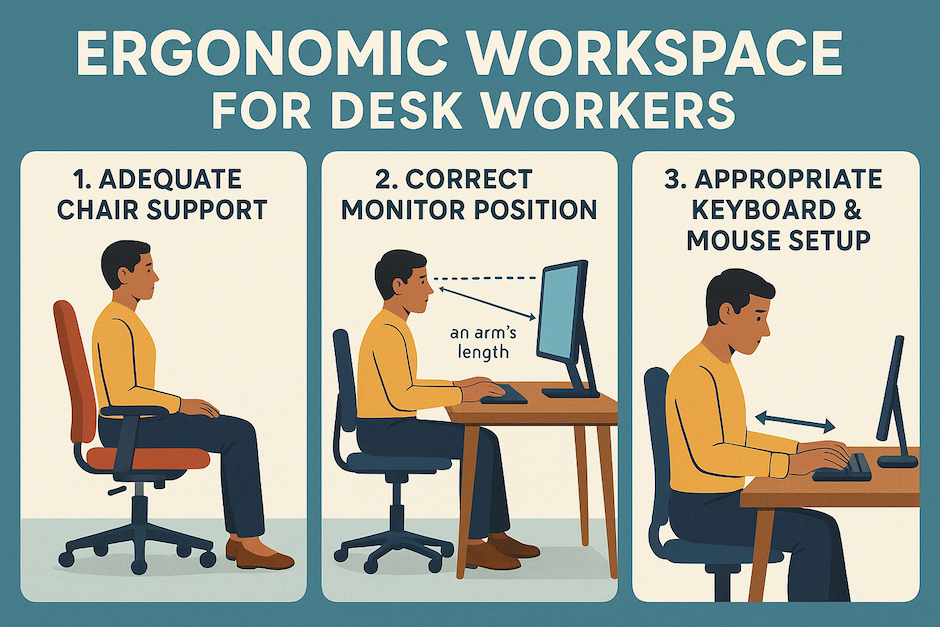
%20(1).webp)
Spending long hours at a desk, especially after 40, can take a toll on your body. Tight shoulders, a stiff neck, and persistent lower back pain become all too common. But a few simple desk stretches can offer relief!
Specifically designed for both remote and office workers, these quick, effective desk yoga stretches are ideal when you barely have time to roll out a mat. In just a few minutes, you can ease tension, improve your posture, and boost your energy — all without leaving your seat.
Keep reading to discover 10 expert-approved desk stretches that target the tight spots holding you back, so you can feel better right at your desk.
Whether you're in an ergonomic swivel chair or hunched over a laptop on your couch, desk-related strain builds up fast, especially in your 30s and 40s, when wellness often takes a backseat to work. In fact, 65% of desk workers experience musculoskeletal pain due to prolonged sitting and poor posture. Here’s why sitting all day leads to those nagging aches:
Here’s how desk jobs lead to aches and pains:
Inactivity, combined with poor posture, can lead to stiffness, making these aches and pains a common issue for desk workers.
That’s where office desk stretches come in. Regular movement, even in small doses, helps prevent these issues.
Sitting for long hours can lead to stiffness, aches, and poor posture. But with these simple desk stretches for office workers, you can release tension, improve mobility, and feel more comfortable.
Try these stretches to ease tension in the back and prevent pain over time:

This stretch targets the spine, lower back, and shoulders. It is great for improving spinal mobility and correcting posture. For deeper relaxation, try closing your eyes and focusing on your breath.

This gentle twist targets the lower back, spine, and the obliques. It works by decompressing the spine to correct posture and aids digestion.

This pose targets the hamstrings and lower back. It works by easing back tension and enhancing flexibility.
These stretches can help ease tension in the neck and shoulders:

This stretch targets the side of the neck and the upper trapezius. It helps ease neck stiffness and prevent tech neck.

This pose targets the upper traps and the shoulder joints. It helps release tension from sitting and typing for long hours. For added calming effects, time these with deep breathing.
This pose targets the shoulders, triceps, and the upper back. It provides a deep stretch for tight shoulders and upper arms.
These stretches can help ease tension in the legs and hips:

This stretch works on the hips, glutes, and lower back. It helps release tight hip flexors from prolonged sitting.
This stretch targets the hamstrings, calves, and lower back. It improves leg flexibility and boosts circulation.
This pose combats poor circulation and energizes the lower body.
Ankle Circles:
Calf Raises:

This stretch targets the torso, shoulders, spine, and hips. It offers full-body engagement and releases tension across the side body.
Creating Your Daily Desk Stretch Routine
Stretching at your desk doesn’t require an hour. With the right strategy, just a few minutes of desk stretches throughout your day can make a huge difference.
Here’s how to build a sustainable routine:
Start your day with light mobility:
These help wake up the spine, improve circulation, and mentally prep you for a focused workday.
Midday Reset
Choose 2–3 stretches based on where you feel tight:
Set a timer or pair it with refilling your water — tiny habits build real change.
Give your body time to decompress:
Add calming music or breathwork to help transition out of work mode.

Stretching can relieve a lot of tension, but pain will keep coming back if your workspace isn’t ergonomic. Here’s how to support your body with better ergonomics, even if you don’t have a fancy setup.
Even with perfect alignment, our bodies aren’t meant to sit for long hours. Combine a supportive setup with regular desk stretches to break the cycle of stiffness and strain.
Long hours at your desk can lead to persistent aches and stiffness, but the right stretches—done correctly—can make all the difference. With 1-on-1 sessions at MyYogaTeacher, you’ll not only find quick relief but also build long-term strength to prevent aches and pains from desk jobs.
With real-time, live guidance, a dedicated coach will guide you through a personalized desk stretching routine while also helping you strengthen the key muscles responsible for your aches and pains. Live guidance and real-time feedback ensure that every stretch is safe, effective, and tailored to your body’s needs.
And the best part? These sessions go beyond the mat. Your coach can help you learn simple, office-friendly desk stretches that you can easily integrate into your workday. When aches and pains strike in the middle of the workday, remember to take a moment and stretch, ensuring long-term health and well-being.
Do yoga stretches the right way! Book a free 1-on-1 session today.
Ideally, you should do 2–3 desk stretches every 60–90 minutes during your workday. Even 2 minutes of movement can help reduce stiffness, improve circulation, and reset your posture.
Absolutely. These stretches are designed to be non-sweaty and non-invasive, so you can do them in work clothes — no yoga pants or sneakers required.
The most effective stretches for lower back pain include:
These target spinal decompression and tight hamstrings, which often contribute to lower back discomfort.
Yes. While stretches alone won’t “cure” carpal tunnel, regular shoulder rolls, wrist circles, and ergonomic setup can reduce tension and improve circulation, both key for prevention.
Hold each stretch for 5–10 deep breaths (about 30–60 seconds). Focus on your breath and avoid forcing — gentle and consistent is more effective than intense and infrequent.

Receive personalized guidance tailored to your unique fitness goals, live with a dedicated coach—no credit card required.